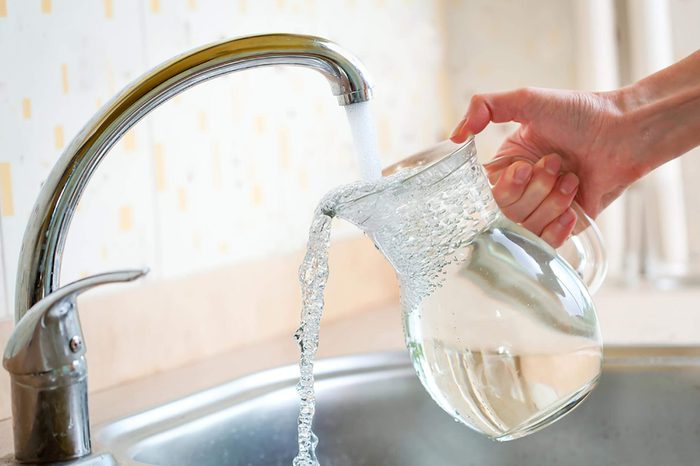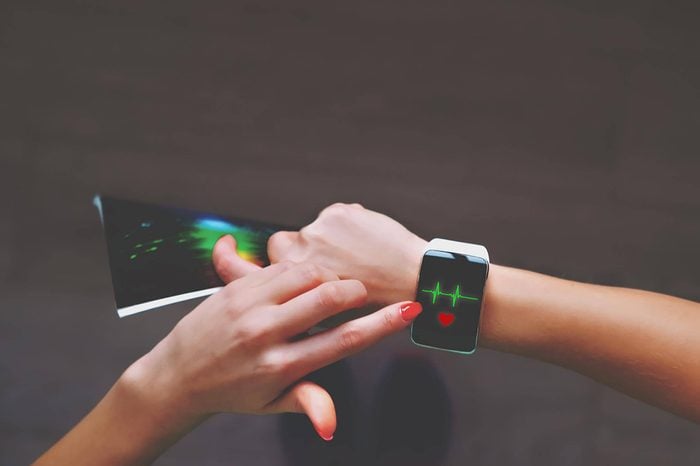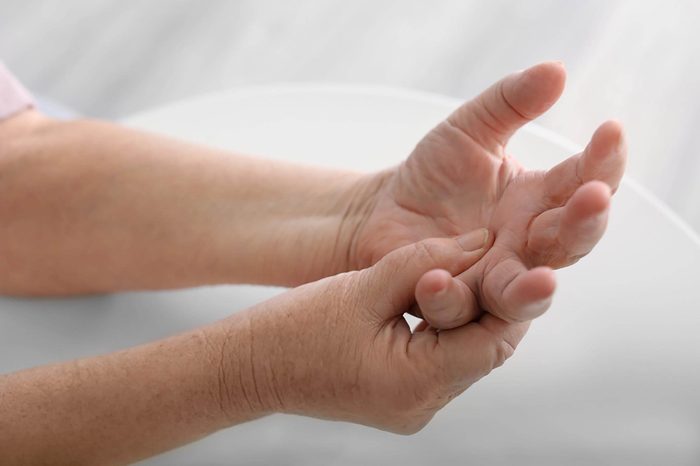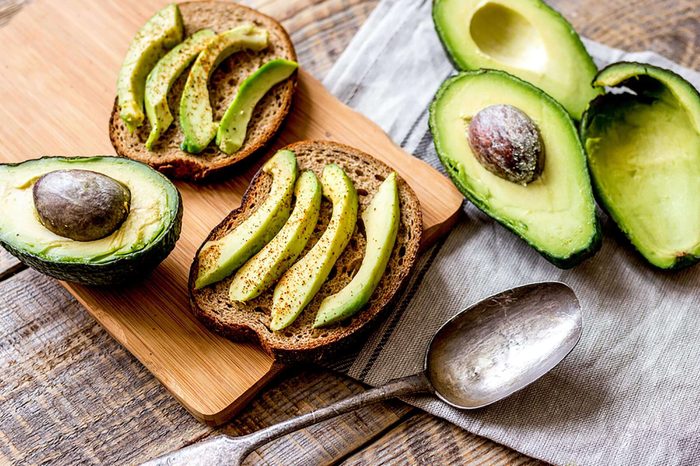
What are electrolytes?
You may have heard about getting electrolytes from sports drinks. Well, electrolytes are actually minerals—sodium, potassium, chloride, magnesium, calcium, phosphate, bicarbonate—that dissolve in the body’s fluids, creating electrically charged ions. “Some are positive, some are negative,” says Robin Foroutan, RD, a nutritionist and New York City-based spokesperson for the Academy of Nutrition and Dietetics. “They are essential because they help the body with nerve and muscle function as well as body fluid balance, blood pressure, and blood pH.”
Dehydration
Dehydration can lead to electrolyte imbalance. Your symptoms can vary depending on which electrolyte is out of balance and whether that level is too high or too low. One of the most abundant electrolytes in our bodies is sodium—and its role is essential. “Sodium is responsible for maintaining the body’s fluid balance,” explains Naveet Bal, MD, assistant professor of medicine, division of nephrology at the Medical College of Wisconsin. Excessive exercise, fever, vomiting, diarrhea, and overexposure to heat are conditions that can cause our bodies to lose water and raise our sodium levels, he says. Symptoms of hypernatremia (too much sodium in the blood) include thirst, agitation, altered state of mind, confusion and in more serious cases, seizures and coma, explains Dr. Bal. There’s also a mind-body connection between dehydration and anxiety. “Anytime we are severely dehydrated, it can be considered an electrolyte imbalance,” Foroutan says. “Many people will be fine if they drink a little water but if you have been exercising for a while, a sports drink may be appropriate.” (Check out these 10 hydration myths you need to stop believing.)

Overhydration
We all know we should drink plenty of water, but drinking too much can also cause problems. Overhydration, also known as hyponatremia, happens when the level of sodium in the blood becomes abnormally low. “Hyponatremia is not common, but it can happen if you drink too much water,” explains Foroutan. Other conditions that can lead to hyponatremia include diuretics, antidepressants, liver failure, renal failure, heart failure, pneumonia, diabetes, hypothyroidism, or severe diarrhea or vomiting when you replace your losses with plain water. Sodium controls the amount of water that is in and around our cells, explains Foroutan, but when we become over-hydrated, the sodium becomes diluted and our cells begin to swell. Symptoms of hyponatremia range from mild to life-threatening and can include nausea and vomiting, headache, confusion, fatigue, restlessness, muscle weakness, seizures, and coma. When it comes to sodium, Foroutan says it’s important to get this mineral from whole foods such as olives, naturally fermented pickles, and sauerkraut rather than processed foods. “Sodium gets a bad rap. While it’s true that most Americans are getting too much sodium from processed foods, you should not cut it from your diet completely.” (Here are the best electrolyte drinks to stay healthy and hydrated.)

Fatigue
One of the most common symptoms of electrolyte imbalance is fatigue. Falling short on magnesium can be the culprit. “Magnesium is involved in more than 300 processes in the body,” says Foroutan. “It is also a big fatigue fighter.” The daily recommendation of magnesium is 420 mg per day for men and 320 mg per day for women, according to the National Institutes of Health. Too little magnesium (hypomagnesemia) can be linked to poor eating habits, drinking too much alcohol, prolonged use of diuretics, diarrhea and gastrointestinal disorders, and the use of acid-reducing pills. “You can increase your magnesium intake by eating foods such as dark leafy grains, nuts and seeds, whole grains, seafood, and poultry,” says Foroutan. “All the healthy foods you should be eating anyway have magnesium.” (Don’t miss the surprising benefits of lime water for your health.)

Slow or irregular heartbeat
Potassium facilitates the electrical impulses our body needs for muscular contractions and for the normal functioning of the brain and nerves, explains Dr. Bal. The electrolyte also works closely with sodium to maintain normal muscle contractions and heart function, making it an important mineral for controlling your heart rate. Hypokalemia (low potassium) happens when our body loses fluid (diarrhea and vomiting) and from some medications like diuretics and laxatives, says Dr. Bal. Mild cases of hypokalemia can be asymptomatic, but moderate and severe hypokalemia can cause muscle weakness, muscular spasms, tingling, numbness, palpitations, slow heart rate (bradycardia), and in severe cases cardiac arrest. Here are more signs you’re not getting enough potassium.
Too much potassium (hyperkalemia) is linked to kidney disease, but it can also be caused by some medications, says Dr. Bal. Having too much potassium in your system can cause muscular weakness, paralysis and possible life-threatening cardiac dysrhythmias. While life-threatening hyperkalemia is treated with dialysis and potassium-lowering medications, restricting dietary potassium can treat mild cases, says Dr. Bal.

Tingling sensations in the feet and fingers
The mineral can be found in cells and the bloodstream, but 99 percent of the body’s calcium is stored in the bones, explains Dr. Bal. This essential electrolyte is responsible for the formation of bone, muscle contraction, blood clotting, the function of many enzymes, and maintaining normal heart rhythm. “Calcium levels are maintained by our parathyroid glands, which produce hormones that can raise and decrease the level of blood calcium,” he explains. When we have too much calcium (hypercalcemia), it is most often associated with a disorder of the parathyroid gland, but it can also be caused by medications such as diuretics and certain cancers. Too much calcium can cause thirst, kidney stones, urinary frequency, bone pain, muscular weakness, confusion, abdominal pain, depression, fatigue, and constipation—often referred to as “moans, stones, and abdominal groans,” says Dr. Bal. Calcium deficiency (hypocalcemia) often occurs as the result of a vitamin D deficiency as the vitamin is essential for the absorption of calcium. Symptoms of hypocalcemia can range from tingling of the feet, fingers, tongue, and lips to more serious conditions such as seizures and cardiac arrhythmia, says Dr. Bal.

Excessive itchiness and poor circulation
Levels of the electrolyte phosphate in the blood are essential to building the energy molecule called ATP (adenosine triphosphate), which stores and transports chemical energy to cells. Too much phosphate can mean your kidneys are compromised. The electrolyte is derived from phosphorous, which is found in protein-rich foods such as dairy and meat—and needs to be balanced by the kidneys. So the greatest risk factor for hyperphosphatemia (too much phosphorus) is advanced renal disease, says Dr. Bal. “But it can also happen from the destruction of muscular tissue as all body cells have phosphorous as their building block.” That destruction? Dr. Bal is referring to excessive muscle breakdown from an overzealous workout or extreme hike or run—you’ll know it as extremely sore muscles. When phosphorus levels are too high, you may experience severe itchiness and calcification of the blood vessels which can affect your circulatory system and cause kidney stones. “Processed meats and canned foods are very high in phosphates as it is a common preservative and flavoring agent,” says Dr. Bal. When phosphorus levels fall too low, it’s can be due to malnutrition or alcoholism; the symptoms include weak respiratory muscles, cardiac arrhythmia, and even death, he says.

Eat, rather than drink, your electrolytes
We often associate electrolytes with sports drinks—just don’t confuse them with energy drinks, which can be unhealthy. But you can also eat your electrolytes. “Eating for electrolyte balance is similar to eating for overall health and wellness and it is the best way to avoid an electrolyte imbalance,” says Foroutan. Foods rich in electrolytes—potatoes, avocados, spinach, sweet potatoes, mushrooms, peas, and beans—are dense in important vitamins and minerals. “Vitamins and minerals are co-factors in metabolic processes, the many kinds of reactions that happen in your body behind the scene such as muscle contraction, brain health, and muscle recovery,” says Foroutan. Don’t miss these 13 nutrients even nutritionists don’t get enough of.

